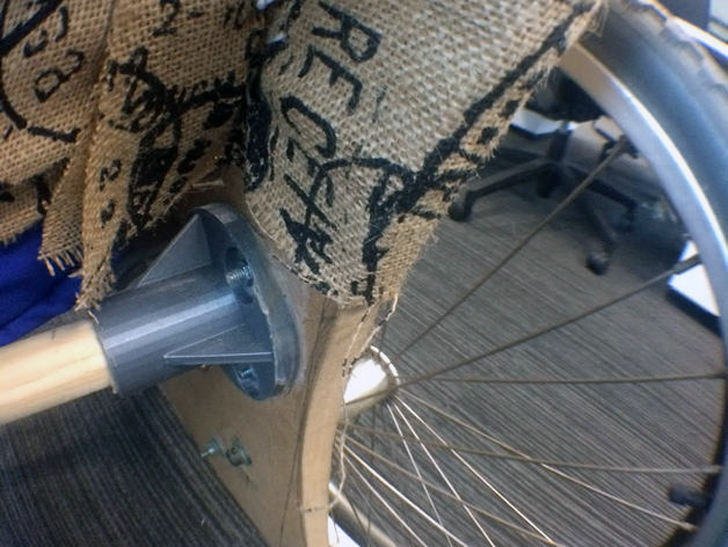With projects like the wide range of 3D printed prosthetics from e-NABLE, just how 3D printing can be a tremendous technology for people with disabilities. By offering quality, low-cost, and easy-to-produce medical equipment, people around the world can potentially receive much-needed, but previously cost-prohibitive, items. Now, Australian designer and Thingiverse contributor Hugo Riveros has begun an ambitious project to take this technology even further, by designing a 3D printable wheelchair.
The HU-GO project has been posted on Thingiverse complete with more detail than just about any thing that I have come across. The first detail I noticed about this project was Riveros’ passion and dedication. He has a genuine desire to help others and has put a lot of time and effort into the HU-GO. In addition, he shares some heartwarming and gut wrenching stories of people with disabilities and their struggles to make it through every day life.
Riveros, who has spent time in a wheelchair himself, due to illness, decided that, after spending three years 3D printing projects for others, that he would begin designing something for a noble cause. Inspired in part by a simple 3D printable table that he found on Thingiverse, Riveros set out to design a wheelchair. He started by studying his own wheelchair and the mechanics behind it in order to determine the proper dimensions and mechanics. Once he completed the design, he added other useful features, like socks for armrests and flour bags for seats. In addition, to the 3D printed parts, HU-GO is made of plywood, zip ties, nuts and bolts, wheels, socks and cushioning.
Riveros goes into painstaking detail about the project, including sketches, notes and pictures detailing the entire process. He was able to complete a fully functioning version of HU-GO 1.0 and it looks great. There is even a video of it in action. All of the information and designs can be found on the project’s Thingiverse page.
With version 1.0, Riverros really knocks it out the park, but he is still dedicated to modifying and perfecting the design, so we can expect regular updates. Over time and with further advances in 3D technologies, we won’t be too far from a time when the components can be almost entirely 3D printed and maybe even personalized for each user via 3D scanning. Once again, we are seeing the evolution of 3D printing and how it can be used to enrich the lives of those around us.






